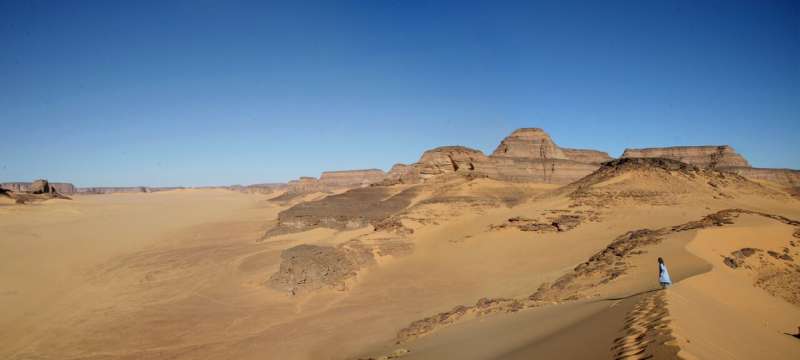Fish in the Sahara? Yes, in the early Holocene

Catfish and tilapia make up many of the animal remains uncovered in the Saharan environment of the Takarkori rock shelter in southwestern Libya, according to a study published February 19, 2020 in the open-access journal PLOS ONE by Wim Van Neer from the the Natural History Museum in Belgium, Belgium and Savino di Lernia, Sapienza University of Rome, Italy, and colleagues.
Today, the Saharan Tadrart Acacus mountains are windy, hot, and hyperarid; however, the fossil record shows that for much of the early and middle Holocene (10,200 to 4650 years BP), this region was humid and rich in water as well as life, with evidence of multiple human settlements and diverse fauna.
Rock shelters within the Tadrart Acacus preserve not only significant floral and faunal remains, but also significant cultural artifacts and rock art due to early Holocene occupation of these shelters. In this study, the authors worked with the Libyan Department of Antiquities in excavating parts of the Takarkori rock shelter to identify and date animal remains found at this site and investigate shifts in the abundance and type of these animal remains over time.
Fish remains made up almost 80 percent of the entire find overall, which numbered 17,551 faunal remains total (19 percent of these were mammal remains, with bird, reptile, mollusc, and amphibian remains the last 1.3 percent). All of the fish and most of the other remains were determined to be human food refuse, due to cut marks and traces of burning—the two fish genera at Takarkori were identified as catfish and tilapia.
Based on the relative dates for these remains, the amount of fish decreased over time (from 90 percent of all remains 10,200-8000 years BP versus only 40 percent of all remains 5900-4650 years BP) as the number of mammal remains increased, suggesting the inhabitants of Takarkori gradually focused more on hunting/livestock. The authors also found the proportion of tilapia specifically decreased more significantly over time, which may have been because catfish have accessory breathing organs allowing them to breathe air and survive in shallow, high-temperature waters—further evidence that this now-desert environment became less favorable to fish as the aridity increased.
The authors add: "This study reveals the ancient hydrographic network of the Sahara and its interconnection with the Nile, providing crucial information on the dramatic climate changes that led to the formation of the largest hot desert in the world. Takarkori rock shelter has once again proved to be a real treasure for African archaeology and beyond: a fundamental place to reconstruct the complex dynamics between ancient human groups and their environment in a changing climate."
More information: Van Neer W, Alhaique F, Wouters W, Dierickx K, Gala M, Goffette Q, et al. (2020) Aquatic fauna from the Takarkori rock shelter reveals the Holocene central Saharan climate and palaeohydrography. PLoS ONE 15(2): e0228588. doi.org/10.1371/journal.pone.0228588
Journal information: PLoS ONE
Provided by Public Library of Science





















